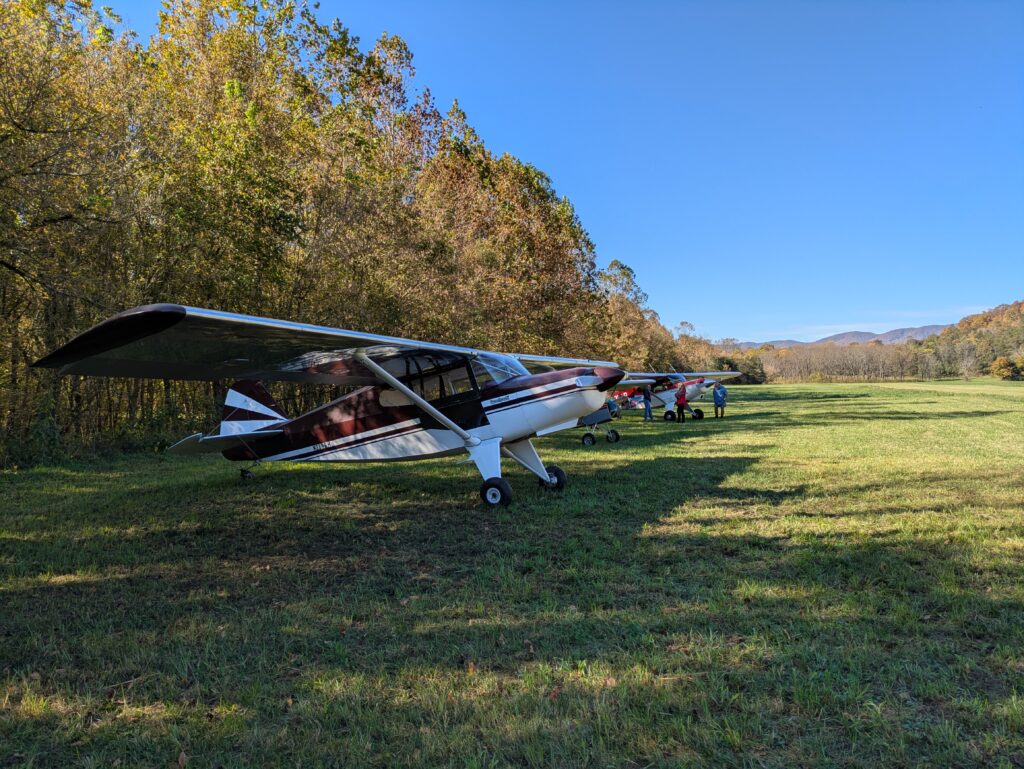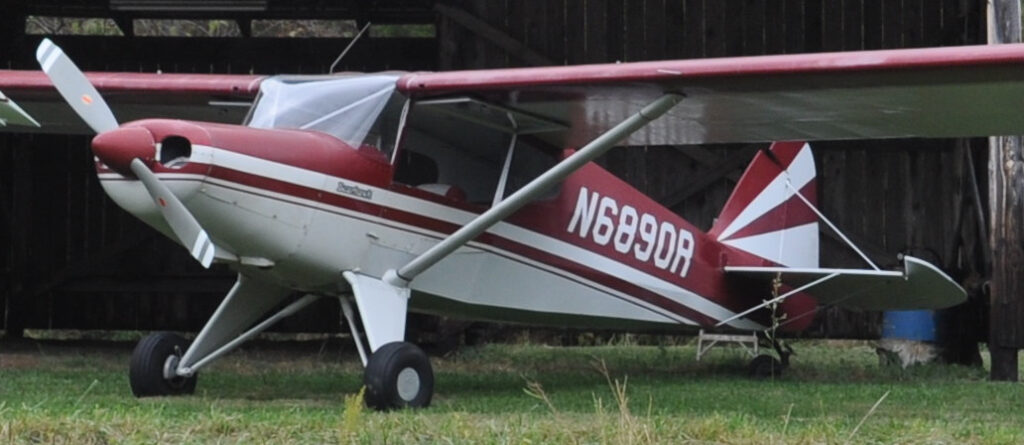
Which Bearhawk Should I Build?
You can currently purchase plans for five different Bearhawk designs. If you are new to the Bearhawk line, this can be a little overwhelming. The most important part of deciding on which plane to build is deciding on what your mission will be for the plane once it is done. This may sound obvious, but it is a step often overlooked.
First, relax! You can be sure that any Bearhawk you select will be a durable and rugged airplane, with appealing, elegant lines of a classic taildragger. It will have excellent “modern” stall characteristics that are much safer than the old planes it was designed to replace. It will have beautiful control harmony and will be a joy to fly!
What is Important to You?
Each builder has different priorities. Do you have a particular engine size in mind? Do you need 2, 4, or 6 seats? Do you like tandem seating or side by side seating?
Engines:
The Bearhawk LSA is designed around the 4-cylinder Continental engines like the A65 and its variants, up to the O-200. It does well with these engines, which can be easily modified to produce 100 or more horsepower.
The Bearhawk Companion and Patrol are designed around the four-cylinder Lycoming O-360 engines, typically with parallel valve cylinders and 180 horsepower.
The Bearhawk 4-Place is designed around Lycoming engines ranging from the O-360 with angle valve cylinders, to the O-540 with parallel valve cylinders, ranging from 170-260 horsepower.
The Bearhawk Five is designed around the O-540 variants with 300 horsepower, and it can handle the heavier angle valve cylinders well.
Payload:
In the homebuilt world, we build for “Education and Recreation” but “Education-and-Recreation-Load” is too long so we’ll call it “Payload”. One of the biggest factors that will impact your useful load will be your empty weight. It is easy for a project to get heavier than it needs to be, and each pound of plane is a pound less of payload you can carry.
If you are sure that you want at least four seats, then you can rule out the Bearhawk Patrol, Bearhawk Companion, and Bearhawk LSA. A Bearhawk 4-Place will carry four real people plus some luggage. A Bearhawk Five will carry four real people plus a lot of heavy luggage, or six people with some luggage.
For the 2-seat airplanes, a Bearhawk Companion will have an advantage of around 100 pounds over a Patrol.
The Bearhawk LSA, if certified to the old 1320-pound LSA gross weight, will carry two people, but you can also safely certify it to a gross weight of 1500 pounds, making it much more useful. With the new MOSAIC regulatory framework, there is probably not any need to specify a gross weight of 1320 pounds anymore.
Seating Configuration:
The Bearhawk Companion is a side-by-side seating arrangement, while the other 2-seaters have tandem seating. If at all possible, sit in the type of plane you would like to build, preferably with the size of person you will most often by flying with. Some folks like the elbow room and “both sides” visibility of the tandem seating. Some folks like being right next to the other person.
| Bearhawk Model | Engine | Seats | Gross Weight (lbs) | Lowest Known Empty Weight (lbs) |
| Bearhawk LSA | 4-Cylinder Continental | 2 Tandem | 1500 | 720 |
| Bearhawk Companion | Lycoming 180HP | 2 Side-by-side | 2000 | 1050 |
| Bearhawk Patrol | Lycoming 180HP | 2 Tandem | 2000 | 1030 |
| Bearhawk 4-Place | Lycoming 170-260HP | 4 | 2500 | 1170 |
| Bearhawk Five | Lycoming 250-300HP | 4-6 | 3000 | 1450 |
History of the Bearhawk Planes
The original Bearhawk, which we now call the Bearhawk 4-Place, was Bob’s first Bearhawk design. It wasn’t the first airplane he designed, and certainly not the first plane that he built. It started as a clean-sheet replacement for Bob’s old Cessna 170. He liked some things about the 170, but knew he could do better. The Bearhawk planes have aluminum sheeted wings, because the aluminum holds its shape well. Airfoil performance is highly dependent on this, which is one reason the Bearhawk planes are faster and slower than most other similarly-shaped planes. In a big departure from the 170, the Bearhawk has a steel tube fuselage. This makes for a strong and durable finished fuselage, with less weight than an all-aluminum structure. The prototype Bearhawk had a 4-cylinder Lycoming engine with low-compression pistons, producing around 180 horsepower. Its empty weight was around 1200 pounds, with a max gross weight of 2500 pounds. This was with an aluminum constant-speed propeller.
Bob flew this plane to Oshkosh in 1994, though it didn’t draw much attention. In 1995, it caught the eye of Budd Davisson, who wrote an article about it. That article ran in the October 1995 edition of the EAA’s Sport Aviation magazine, and the Bearhawk world started growing fast.
Bob started selling plans for the Bearhawk, and providing additional build details and support with the quarterly Beartracks newsletter.
Over the years, Bob’s mission began to change. He found that he was taking more trips to Idaho, which is a long haul from his home airstrip in Fincastle, Virginia. He wanted a plane that was a little faster and a little slower than the original Bearhawk. His new design became the Bearhawk Patrol, the two-seat tandem airplane that is shaped like a Super Cub, but much faster in cruise.
Once Bob started selling plans for the Patrol, a small subset of builders started thinking about the new Light Sport Aircraft regulations that would allow pilots to self-certify their medicals. At the time, these regulations restricted max gross weight to 1320 pounds. Bob knew that it was possible to build a Patrol that could still be useful with this restriction, but to get the most out of the rules, Bob designed a whole new airplane which became the Bearhawk LSA. This was the third plane in the Bearhawk line, but it was the first to be born more from customer requests than from Bob’s own personal mission.
Years later, a few builders became interested in a 2-seat Bearhawk with side by side seating. The Bearhawk Companion is an interesting combination of the original Bearhawk’s fuselage, and the wings from the Patrol. The cabin is shortened, as is the engine mount and cowling. The gross weight is reduced compared to the original Bearhawk 4-Place. While the steel portion of the fuselage can be built on the same jig as the original 4-Place, the plane overall is a little bit shorter. The end result is a very spacious and useful airplane.
The Bearhawk Five was a natural outgrowth from the other Bearhawks. It is two feet longer than the original Bearhawk, with one of those feet being in the cabin. The cabin is also wider, and the maximum gross weight is increased from 2500 to 3000 pounds.
The original Bearhawk was revisited and updated to the “Model B”. These updates include a more efficient Riblett airfoil, a round tailwheel spring, profiled horizontal stabilizer ribs, and improved flap configuration.
Bearhawk LSA

Bearhawk Patrol

Bearhawk Companion:

Bearhawk 4-Place

Bearhawk Five

